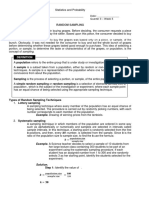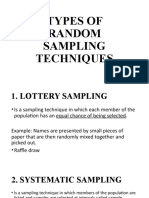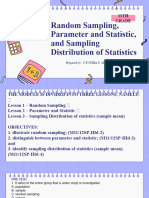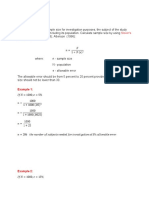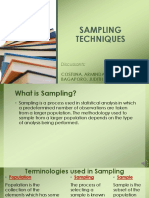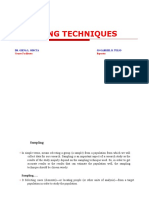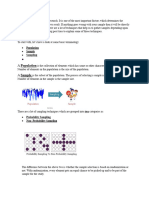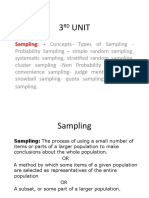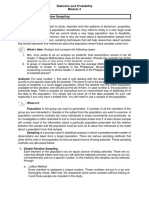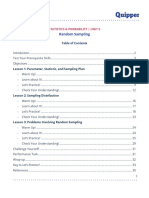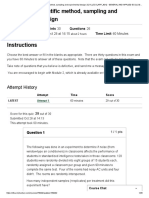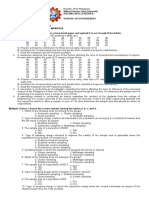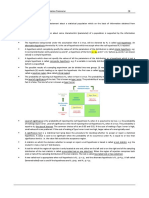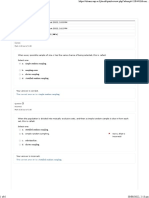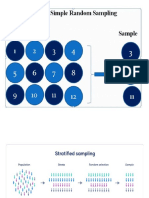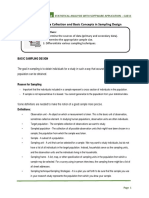0% found this document useful (0 votes)
12 views17 pagesRandom Sampling Parameter and Statistic and
The document discusses the concepts of population, sample, and various random sampling techniques used in research. It defines a population as the entire group under study and a sample as a subset from that population, emphasizing the importance of random sampling methods like lottery, systematic, stratified, cluster, and multi-stage sampling. Each technique is explained with examples to illustrate how samples can be effectively drawn from populations for valid research conclusions.
Uploaded by
MashiroCopyright
© © All Rights Reserved
We take content rights seriously. If you suspect this is your content, claim it here.
Available Formats
Download as PDF, TXT or read online on Scribd
0% found this document useful (0 votes)
12 views17 pagesRandom Sampling Parameter and Statistic and
The document discusses the concepts of population, sample, and various random sampling techniques used in research. It defines a population as the entire group under study and a sample as a subset from that population, emphasizing the importance of random sampling methods like lottery, systematic, stratified, cluster, and multi-stage sampling. Each technique is explained with examples to illustrate how samples can be effectively drawn from populations for valid research conclusions.
Uploaded by
MashiroCopyright
© © All Rights Reserved
We take content rights seriously. If you suspect this is your content, claim it here.
Available Formats
Download as PDF, TXT or read online on Scribd
/ 17






